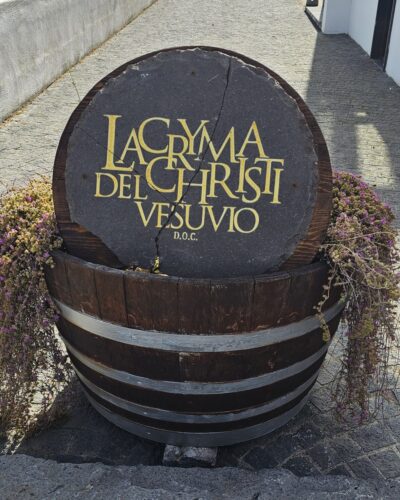If there is a story in every bottle of wine, Lacryma Christ del Vesuvio DOC is top of the narrative among the wines of Campania. Lacryma Christi wines are produced exclusively from grapes cultivated on the slopes of Mount Vesuvius.
How the wines earned their name “Tears of Christ” varies depending on whom you speak with. Some say when Jesus Christ first laid eyes on the Bay of Naples, He cried tears of joy over its beauty. Others say He cried tears of pain after Lucifer, Angel of Evil, was expelled from Paradise and stole a piece of Heaven to form the Bay of Naples. Still others say He cried tears of relief because Lucifer was finally removed from Heaven and sent to Hell. Whatever the version, the story ends the same: Christ’s sweet tears landed on the slopes of Mount Vesuvius and nourished the soil from which vineyards blossomed.
The Vesuvius DOC was established in 1983; however, historical records point to the first vines being planted on the volcano’s slopes around the fifth century B.C. Centuries of volcanic eruptions created the mineral -rich soils of organic matter and ash. These dark, sandy soils are filled with fossils and minerals, including potassium and iron, lapilli (small volcanic rock fragments). Due to its porous nature, this soil composition is uninhabitable for phylloxera. As a result, ninety percent of the local vines are ungrafted.
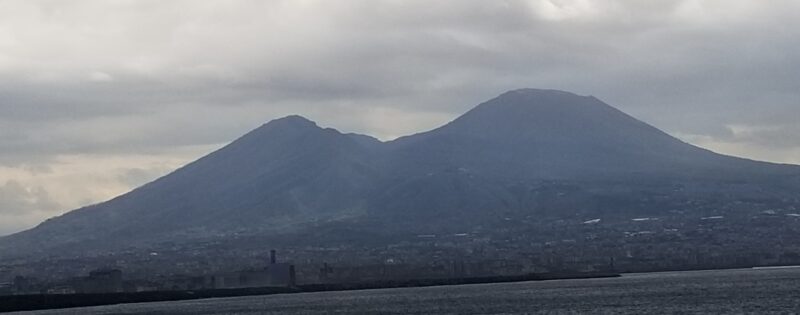
Geographically, there are two distinct regions formed over time from the same volcanic area. Mount Somma is to the north /northeast of Vesuvius. Mount Vesuvius and its cone were formed out of Mount Somma. Today, Mount Vesuvius remains Europe’s largest active volcano but there has not been a major eruption since 1944. You can read more about the formation here: Geology and Vulcanology | Vesuvius National Park
Wines are produced on both sides of Somma-Vesuvius mountain region. Somma has north-facing vines and older soils consisting of fine sand. This area is also cooler and wetter. The south side of Vesuvius received more sun and is drier. The soils have more pumice and lapilli.
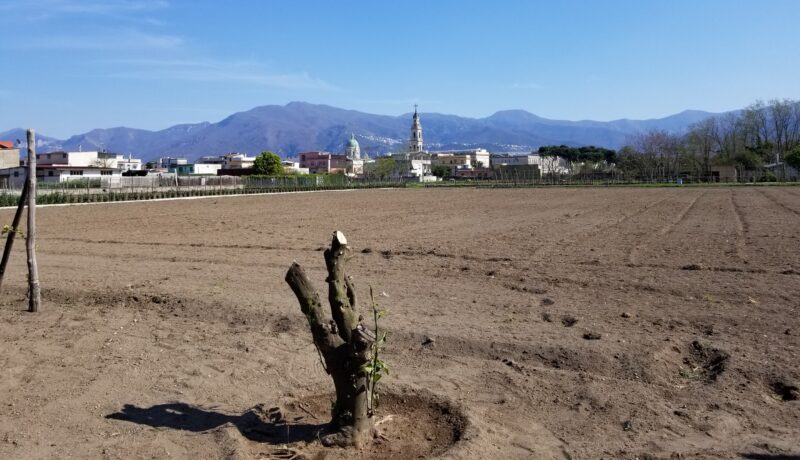
Indigenous white grapes cultivated include Falanghina, which is citrus-blossom fresh, and Coda di Volpe, a more full-bodied floral variety whose name means “tail of the fox,” a reference to the length and shape of the grape clusters. Caprettone, a white variety exclusive to the Vesuvius region is another variety usually used for blending. Aglianico is the Sophia Loren star of southern Italian red grapes, producing sultry wines that are full-bodied with great structure and long aging potential. It is considered one of the great red grapes of Italy. Other reds include Piedirosso, a dark, earthy, black-skinned grape whose name means “red feet,” and Olivella, named after its small olive-shaped grapes, which adds rustic, herbal notes.
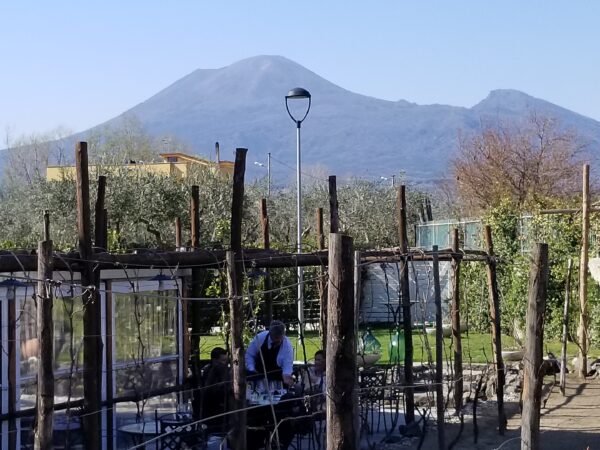
Vesuvio DOC guidelines for Lacryma Christi require that Lacryma Christi Bianco be made with a minimum of 45% Caprettone and/or Coda di Volpe and maximum 35% Falanghina and/or Greco with a maximum 20% other white native grapes such as Falanghina or Greco Bianco. Lacryma Christi Rosso must be a minimum of 50% Piedirosso, a maximum 30% of Aglianico, Olivella, and/or Sciascinoso and a maximum 20% other red native grapes. Lacryma Christi Rosato or Rosè must be a minimum of 50% Piedirosso, a maximum of 30% Aglianico, Olivella, and/or Sciascinoso and a maximum of 20% other native red grapes.
Visiting the Vesuvius Region
Many of the wineries are located to the south of the volcano in Vesuvius National Park. Appointments are necessary. Here is a list of family-run wineries we visited and recommend:
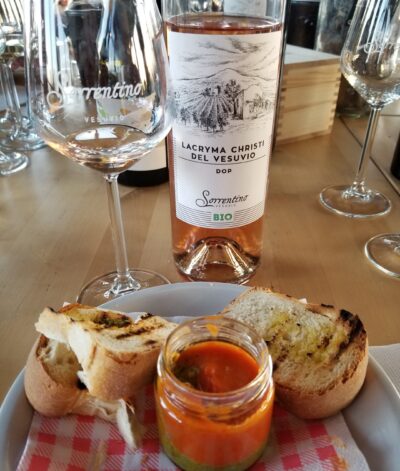
Sorrentino Vini: This family producer overseen by three generations produced the first and only Lacryma Christi del Vesuvio DOC sparkling wine called DòRè.
Bosco de Medici: The winery also has a stylish resort and restaurant. Where else can you find wines called Pompeii Rosso and Lavaflava?
Cantine del Vesuvio: The winery offers a terrific lunch with wine pairings as well as cooking classes by appointment. It produces Lacryma Christi wines exclusively.
Cantina Olivella: Named for the ancient Olivella spring nearby, Cantina Olivella is located on the northern Monte Somma region, The winery was among the first to produce Summa Monte Somma IGT wine made from 100% Catalanesca, a rare white grape variety of Catalan origin.
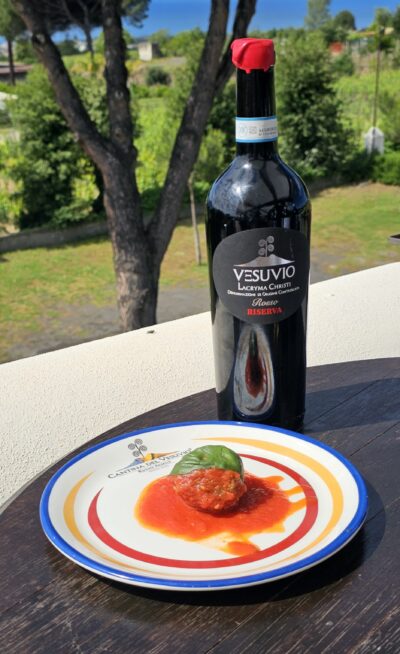
Wine of the Pizza
Some refer to Lacryma Christi as “pizza wines,” probably since Naples is the home of the world’s most famous pizza. Pizza Napoletana is made with San Marzano tomatoes also grown in the vicinity of the volcano, local Mozzarella di Bufala Campania, a tangy, supple cheese made with the milk of water buffalo so revered it has its own protected designation of origin (DOP); and fresh basil. The craft of making this pizza has been recognized by UNESCO as having “intangible culinary heritage.”

